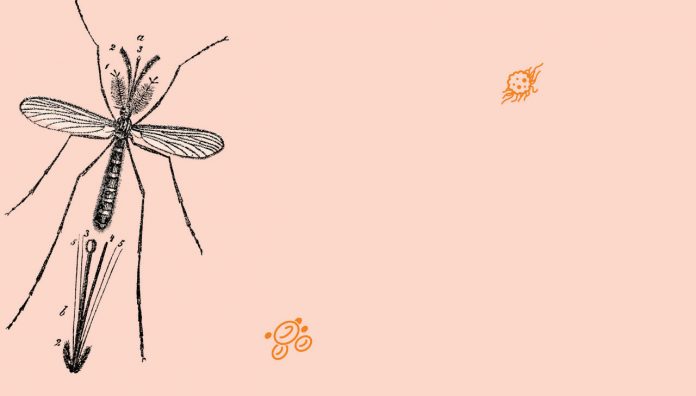Quinine’s use in treating malaria is linked to the expansion of European colonisation over the last 400 years.
Quinine is derived from the bark of the Peruvian cinchona plant and is believed to have been first imported to Europe to be used in the treatment of fevers in the 16th century by Jesuit priests. Before the first European use, it is believed the Indigenous people of the Andes had used preparations of cinchona plant to treat malaria.
In Europe (before 1820) cinchona bark was ground up and mixed with wine to obscure its bitter taste; it was used mainly along the Mediterranean (and in colonial possessions) in the treatment of malaria. In 1820 the active alkaloid ingredient of the cinchona bark, quinine, was isolated for the first time by French chemists Pierre Joseph Pelletier and Joseph Caventou. Quinine was extracted from the bark and prophylactically used in the treatment of malaria through the US Civil War, the ‘Race for Africa’ by European powers, and the colonisation of Asia. It was only during World War II that scientists were successful in developing synthetic substitutes when plantations of cinchona in tropical regions (such as the Dutch possessions in Indonesia) were under occupation.
How it works
The exact method by which quinine works to affect the malaria parasite is not known with certainty but it is believed to affect the parasite’s ability to metabolise haemoglobin. The theory goes that the high concentrations of chloroquine impact on the ability of the parasite to break down haem, released during haemoglobin breakdown, which subsequently builds up to poisonous levels in the parasite, killing it.
Quinine in humans is mostly metabolised by the kidneys and is excreted 11–18 hours after administration with possible side effects being mild forms of tinnitus, slight impairment of hearing, headache and nausea, with hypotension (in cases of rapid administration) and hypoglycaemia (usually in pregnant women) also reported.
Modern use
In recent years the malaria parasite has shown increasing resistance to quinine, but this resistance is usually of a low order delaying or diminishing the effectiveness of the drug while not completely reducing its effectiveness. It’s important to note that resistance to quinine has only been widely reported outside of Africa, where there have been conflicting reports of no resistance and varying degrees of resistance.
Quinine has also been used in various drinks, including tonic water, as a bittering agent. But the low levels present in beverages today offer no protection against malaria, despite the ongoing myth of the prophylactic effect of the classic gin and tonic. Today, modern research is focusing on the use of nano-medicines to combat a parasite that infects around 219 million people, and caused the deaths of 435,000 people in 2017.
References
- Achan J, Talisuna AO, Erhart A, et al. Quinine, an old anti-malarial drug in a modern world: role in the treatment of malaria. Malaria Journal. [Internet] 24 May 2011 [Cited 5 December 2018] Available from https://www.ncbi.nlm.nih.gov/pmc/articles/PMC3121651/
- Hicks, Robert D. “The Popular Dose with Doctors”: Quinine and the American Civil War. Distillation Magazine [Internet] Fall 2013/Winter2014 [Cited 5 December 2018] Available from https://www.sciencehistory.org/distillations/magazine/the-popular-dose-with-doctors-quinine-and-the-american-civil-war
- Foley, Mick. Tilley, Leann. Quinoline antimalarials: Mechanisms of action and resistance. International Journal for Parasitology Volume 27, Issue 2, February 1997, Pages 231-240. At: https://www.ncbi.nlm.nih.gov/pubmed/9719345
- Bloland, Peter B. Drug resistance in malaria. World Health Organization Department of Communicable Disease Surveillance and Response [Internet] 2001 [Accessed 5 December 2018] Available from: http://www.who.int/csr/resources/publications/drugresist/malaria.pdf
- Roland, James. Quinine in Tonic Water: What Is It and Is It Safe? [Internet] 3 January 2018 [Accessed 5 December 2018] Available from: https://www.healthline.com/health/quinine-in-tonic-water



 John Jones MPS, pharmacist immuniser and owner of My Community Pharmacy Shortland in Newcastle, NSW[/caption]
John Jones MPS, pharmacist immuniser and owner of My Community Pharmacy Shortland in Newcastle, NSW[/caption]


 Debbie Rigby FPS explaining how to correctly use different inhaler devices[/caption]
Debbie Rigby FPS explaining how to correctly use different inhaler devices[/caption]




 Professor Sepehr Shakib[/caption]
Professor Sepehr Shakib[/caption]

 Lee McLennan MPS[/caption]
Lee McLennan MPS[/caption]
 Dr Natalie Soulsby FPS, Adv Prac Pharm[/caption]
Dr Natalie Soulsby FPS, Adv Prac Pharm[/caption]
 Joanne Gross MPS[/caption]
Joanne Gross MPS[/caption]





